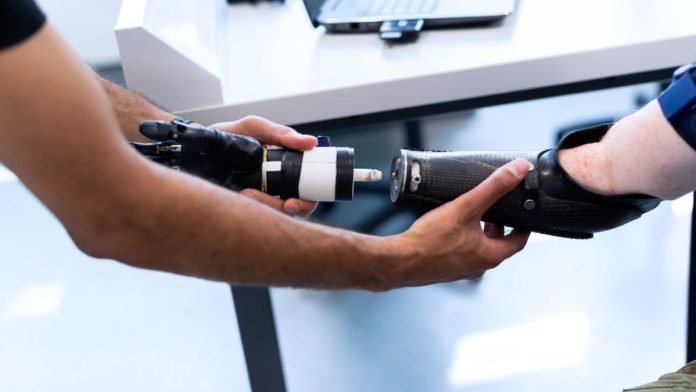“If you don’t have your health, you don’t have anything.” It’s a common platitude that highlights just how important a healthy mind and body are. If your body and mind are in their best possible state (obviously with consideration to chronic conditions or mental illnesses), it provides the optimum foundation for overcoming life’s many challenges.
It’s no wonder then that with the increasing rise in the use of technology to contribute to our daily lives, people are using technology to keep track of their health, whether that means hours slept, diet, exercise, or even completing online courses in health to learn either about their own bodies or how to help others meet their health goals.
We find ourselves in an age of rapid technological expansion, and there have already been significant advances in digital health apparati. In a day and age when this technology is only going to continue to develop, it’s worth taking a look at where it began, where it is now, and where it seems to be going.
The Early Days
The earliest medicine and health technologies were, as you may guess, surgical tools. It appears that mankind has been attempting to seek cures to illnesses and ails as far back as our earliest techno-industrial era, the neolithic era; during which surgical tools were made out of bone, horn, obsidian, and stone. Later as mankind developed, these tools would become much more refined, and crafted from Copper and later Bronze during the earliest human civilisations.
From the Bronze Age, experimentation was the name of the game, with countless physicians researching various theories and looking into many aspects of the human body. However looking at humanity’s history of medical technology is a tapestry of surprising developments. The first compound microscope was made in the 1500-1600’s though who exactly invented it is unclear with debate surrounding two potential inventors, but the first research body to obtain one was Yale University, who acquired the instrument nearly two-hundred years after its invention.
The history of surgical technology is an erratic timeline, with seemingly complex machines and implements being developed unexpectedly early, while simple knowledge and common procedures are surprisingly modern. However, all that research and experimentation has brought humanity to its current apex of technology – the information age.
The Information Age
Modern computing traces its origins in the throes of WWII, when the German offensive was using an indecipherable code to relay messages across the war effort. The Allies were succumbing to the efficiency of these messages, and on the back foot.
Alan Turing had been working with the British Cytology department since 1939, and since the outbreak of the war was working with numerous other experts in breaking the German Enigma code. Turing’s work during WWII was the beginning of modern computer science, and with Hedy Lamarr’s invention of ‘frequency hopping’ (the early spine of wi-fi) during the same era, the stage had been set for a modern digital age in healthcare.
Computers and the internet are the core components of our era’s technology and development. Since the invention of Fitbit’s in 2007, people have been using technology to improve their health, as well as monitor and take care of their bodily systems. However, the digital age has offered much more than just fitness apps and watches that track information regarding chronic conditions and vital signs.
The advent of commonplace internet use has resulted in several major breakthroughs that have been directly responsible for saving lives. Electronic Health Records have played a major role in healthcare staff having constant and ready access to necessary medical information regarding their patients.
Digital technology has also streamlined communication processes allowing medical staff to liaise between departments easier and more rapidly carry out tests, results, and formulate care plans. Healthcare professionals are even using AI analytics to better recognise trends and patterns in patient healthcare and quickly integrate new solutions to their patient’s care and treatment.
A Speculative Future
As we step into an age where technology is more and more integrated into our life, it is interesting to consider what healthcare may look like in the future – and indeed several people have done just that.
From the Bacta Tanks in the Star Wars universe, to the cybernetic implants that enhance strength, reflexes, vision, and more in various cyberpunk literature, one can only wonder what miracles of medicine humanity’s future will yield.
It seems in our future, things are heading for a more cyberpunk modality. Much of the technology that the cyberpunk genre uses as common aesthetics is either currently in development, or in active use. In fact, it seems we may have been heading this way for a while, as the first implanted piece of medical tech was invented in 1958. Since then medical cybernetic implants have come a long way, and now both medical and cosmetic mechanical treatments and ‘enhancements’ (depending on your point of view) are becoming relatively commonplace.
We can only hope that the speculative dystopias of the cyberpunk genre don’t follow them.
The editorial staff of Medical News Bulletin had no role in the preparation of this post. The views and opinions expressed in this sponsored post are those of the advertiser and do not reflect those of Medical News Bulletin. Medical News Bulletin does not accept liability for any loss or damages caused by the use of any products or services, nor do we endorse any products, services, or links in our Sponsored Articles.



